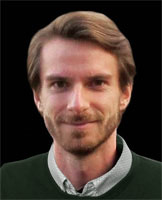Staff profile

| Affiliation | Telephone |
|---|---|
| Combined Role in the Department of Archaeology |
Biography
Supervisors
I studied Prehistory and Protohistory, Archaeology of the Ancient Near East as well as Classical Archaeology in Heidelberg (Germany), where I focused on the Bronze Age Mediterranean and the Early Middle Ages. The preparation of my undergraduate thesis about a Mycenaean river diversion near the palatial site of Tiryns (Greece) aroused my interest in geoarchaeology and socio-environmental systems. My long-term involvement in the Tiryns project also offered me the opportunity to receive training in microarchaeological methods, including infrared spectroscopy, phytolith analysis and soil micromorphology at the Kimmel Center for Archaeological Science and the University of Haifa. In my Master’s thesis about Mycenaean domestic hearths, I made use of these techniques to study individual and group identities expressed by practices related to foodways. Before I started my PhD project in Durham, I worked at the University of Salzburg for a project on Aegina Kolonna (Greece), where I was responsible for the development of a new site database and Structure-from-Motion photogrammetry.
Current Research Topic
Lindisfarne Landscapes: Geoarchaeological Approaches to Human-Environment-Relations
Abstract
The Holy Island of Lindisfarne is a small tidal island on the coast of Northumberland in northeast England. It has an eventful history, both in terms of cultural changes and landscape evolution. During the periods that are best attested in the archaeological and historical records, from the Anglo-Saxon period (5th to 11th centuries AD) onwards, it has seen cycles in the intensities of economic, political and religious importance. Previous studies suggest that at the same time, profound changes in vegetation cover, hydrology and dune development took place. However, while current archaeological excavations in the South of the island provide invaluable new insights in the development of habitation and ecclesiastical history, patterns of land use and misuse, as well as the influence of climatic factors remain mostly unknown. This project aims at reconstructing the Holocene landscape evolution of the Holy Island of Lindisfarne, focusing on the Anglo-Saxon and medieval periods and at understanding human-environmental-relations. It will make use of extensive and intensive soil and sediment surveys and a suite of analytical methods, including thin-section micromorphology, foraminifera and phytolith analyses as well as OSL and radiocarbon dating.
My PhD project is accompanied by a CASE placement with community archaeology company DigVentures, which collaborates with Durham University to study the area of the presumed location of the Anglo-Saxon monastery since 2016.
Scholarships and Grants
• 2020-2022/23: German Academic Scholarship Foundation: doctoral scholarship maintenance grant for 3 years
• 2020-2023: NERC IAPETUS2 Doctoral Studentship, covering tuition fees
• 2020-2023: NERC IAPETUS2 Research and Training Support Grant (£9,460)
• 2021: Botanical Society of Britain and Ireland Research Grant (£800)
• 2023: National Environmental Isotope Facility grant for 27 radiocarbon dates (£15,454)
• 2023: Society for Medieval Archaeology research grant (£700)
• 2023: Medieval Settlement Research Group research grant (£700)
External Supervision
• Dr Jeremy Lloyd (Department of Geography)
• Prof Dr Lisa-Marie Shillito (Newcastle University)
Publications
Conference Paper
- Lindisfarne Landscapes – Geoarchäologische Untersuchungen von Mensch-Umwelt Beziehungen auf Holy IslandKahlenberg, R., Milek, K., Bailiff, I., & Lloyd, J. (2022, May 12 – 2022, May 14). Lindisfarne Landscapes – Geoarchäologische Untersuchungen von Mensch-Umwelt Beziehungen auf Holy Island [Conference paper]. Presented at 17. Jahrestagung des AK Geoarchäologie, Mainz.
- Lindisfarne Landscapes: Geoarchaeological Approaches to Human‐Environment Interactions on Holy Island (Northumberland, United Kingdom)Kahlenberg, R. (2021, September 6 – 2021, September 11). Lindisfarne Landscapes: Geoarchaeological Approaches to Human‐Environment Interactions on Holy Island (Northumberland, United Kingdom) [Conference paper]. Presented at European Association of Archaeologists Annual Meeting, Kiel, Germany.
- Phytolith Analysis for Exploring Holy Island's Vegetational History (Poster)Kahlenberg, R., O’Meara, D., Shillito, L., & Milek, K. (2021). Phytolith Analysis for Exploring Holy Island’s Vegetational History (Poster) [Conference paper]. Presented at Annual Exhibition Meeting of the Botanical Society of Britain and Ireland.
Journal Article
- Assessing quantitative methods in archaeology via simulated datasets: The Archaeoriddle challenge. Concept, project and motivationsCortell-Nicolau, A., Carrignon, S., Rodíguez-Palomo, I., Hromada, D., Kahlenberg, R., Mes, A., Priss, D., Yaworsky, P., Zhang, X., Brainerd, L., Lewis, J., Redhouse, D., Simmons, C., Coto-Sarmiento, M., Daems, D., Deb, A., Lawrence, D., O’Brien, M., Riede, F., … Crema, E. (2025). Assessing quantitative methods in archaeology via simulated datasets: The Archaeoriddle challenge. Concept, project and motivations. Journal of Archaeological Science, 177, Article 106179. https://doi.org/10.1016/j.jas.2025.106179
- Geoarchaeological Investigations at Lindisfarne, Northumberland: Soil Survey and Assessment in 2018 and 2019Prijatelj, A., Kahlenberg, R., & Milek, K. (2020). Geoarchaeological Investigations at Lindisfarne, Northumberland: Soil Survey and Assessment in 2018 and 2019. Medieval Settlement Research, 35, 93-99.
- Microarchaeological Studies of Hearths in the Northwestern Lower Town of TirynsKahlenberg, R., & Shahack-Gross, R. (n.d.). Microarchaeological Studies of Hearths in the Northwestern Lower Town of Tiryns. Archäologischer Anzeiger, 2, 82-86.
Other (Digital/Visual Media)
- Postcard from the Past: Landscapes of Lindisfarne (Video)Kahlenberg, R. (in press). Postcard from the Past: Landscapes of Lindisfarne (Video).
Report
- Geoarchaeological Research on Holy IslandKahlenberg, R. (2020). Geoarchaeological Research on Holy Island.

